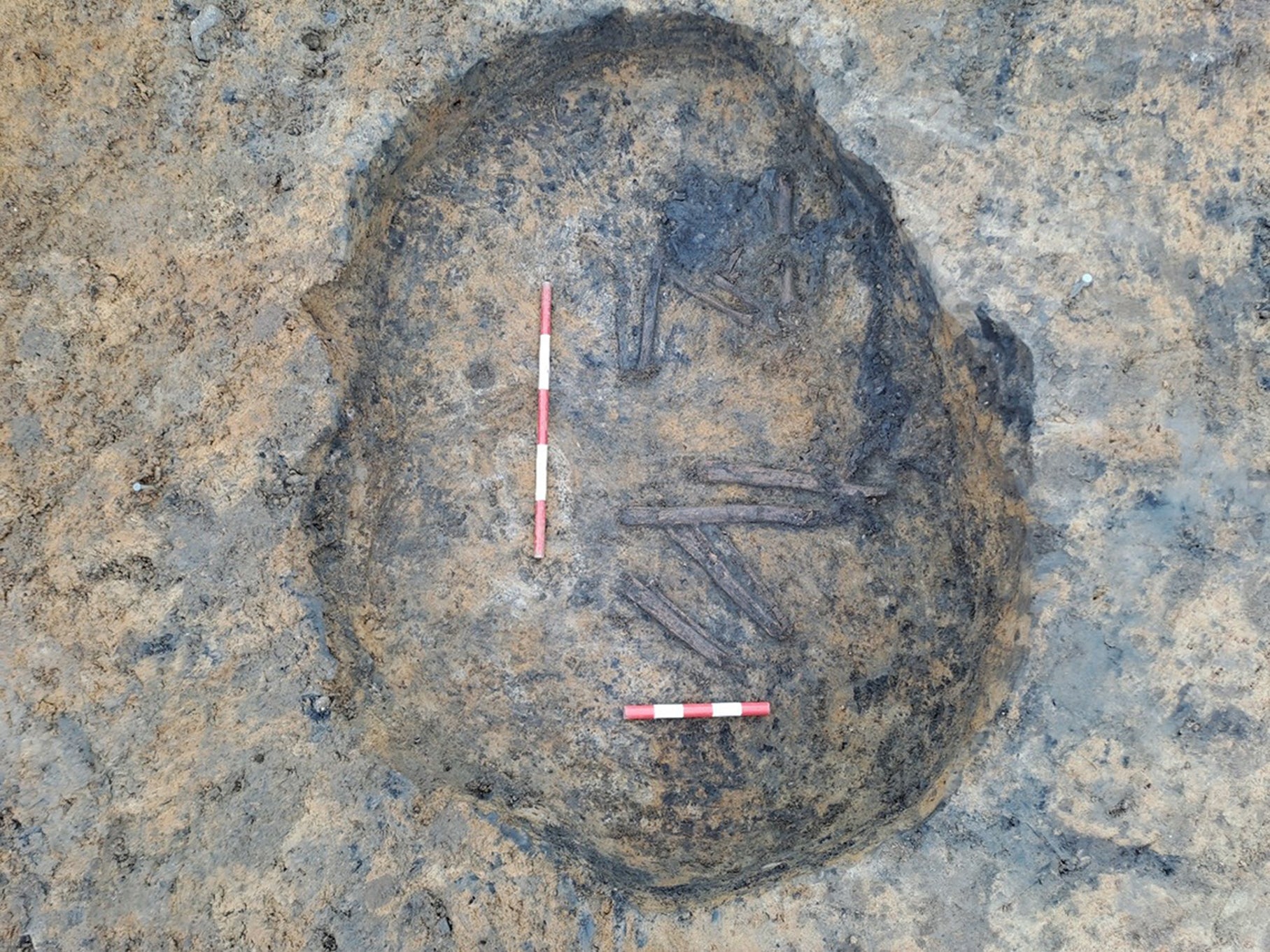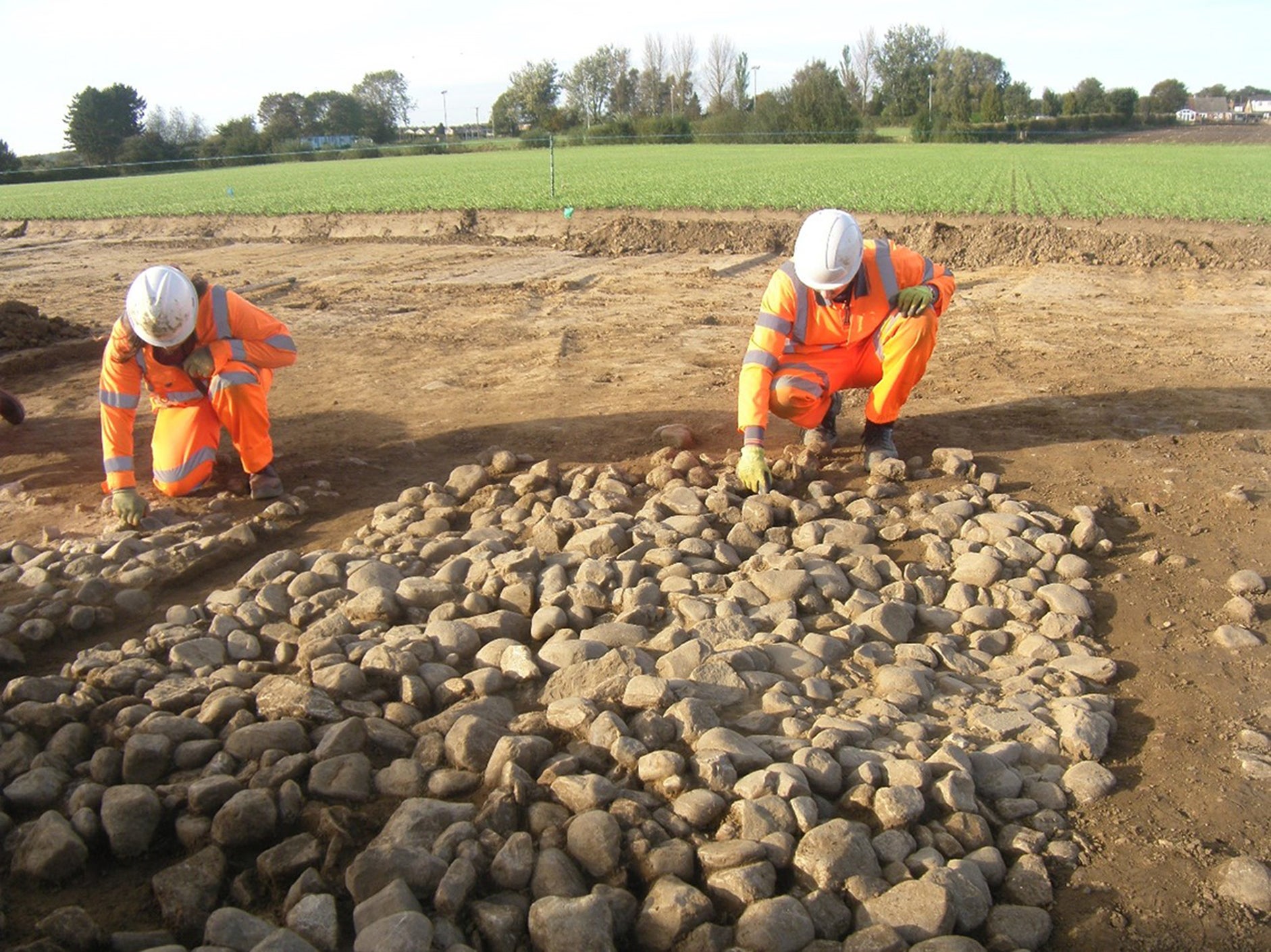Human remains found at prison sewer site are thousands of years old
The individual was discovered in a burial monument unearthed by archaeologists

A 4,500-year-old burial has been found as part of the construction of a sewer for a new prison.
The individual was discovered in a burial monument unearthed by archaeologists investigating the site of a new sewer to serve a jail currently being built at Full Sutton, East Yorkshire.
Yorkshire Water said the small, circular monument contained a buried individual who was placed in a pit in a foetal or “crouched” position.
The archaeological team said these prehistoric traditions are seen in similar monuments, or “round barrows”, found around the UK and they believe that the Full Sutton example could be approximately 4,500 years old.
The new prison will be called HMP Millsike and is being built next to the existing HMP Full Sutton.
A Yorkshire Water spokesman said: “It was disturbed by later ploughing, but, considering the ground conditions, the associated human remains were surprisingly well-preserved.
“The local sandy geology is usually too acidic for human remains to survive, however, the grave had been backfilled with a mixture of burnt stone and charcoal from the adjacent ‘burnt mound’ spread, which seems to have helped the bones survive.”
He said: “The grave did not contain any artefacts, however, the bones themselves are an important scientific resource as specialist analysis often provides evidence that can provide insights about the life of the individual.”
The spokesman said that the analysis stage of the project has not started “but it is clear that the recorded remains and the palaeo-environmental material recovered have the potential to help answer some of the many remaining questions about life some four and a half thousand years ago”.
The barrow was constructed close to what archaeologists call a “burnt mound” with a small earth oven, containing the stone from its last use, as well as what appears to be a well.

Little is known about what burnt mounds were used for and Yorkshire Water said it is hoped these finds will help with research. The main theory is that stones were heated up and placed in troughs to heat water, either during the process of dyeing cloth or cooking.
Alternatively, some burnt mound sites include structures that could have been used as saunas.
The team hopes the soil samples taken from the well will contain the preserved remains of plants and possibly insects which will provide “valuable and rare data” about what was happening at the burnt mound site as well as what the local environment was like.
Part of the foundations of a previously unknown Roman road were also revealed as part of the Full Sutton project. Yorkshire Water said its alignment suggested it led northwards towards the remains of the Roman town of Derventio at Reckondales.
The investigations were carried out by Ecus Archaeology for Yorkshire Water during a £5 million project to build the new 5.2 kilometre sewer.
Adam Ellis, project manager at Yorkshire Water, said: “This has been a fascinating project to be involved with. The archaeology work prior to us starting the new sewer in the area is something we do on projects considered areas of archaeological interest and it was great to see some of the findings from site.
“Our project is now underway and the sewer currently being laid will provide services for the new prison.”
Join our commenting forum
Join thought-provoking conversations, follow other Independent readers and see their replies
Comments
Bookmark popover
Removed from bookmarks